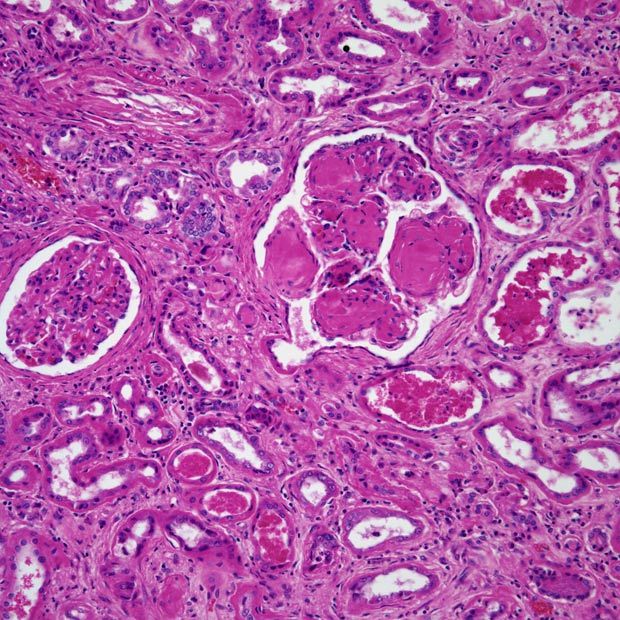Tocilizumab May Reduce CRS Recurrence in Teclistamab-Treated Multiple Myeloma
Findings from the phase 1/2 MajesTEC-1 trial suggest that preemptively planning and promptly managing cytokine release syndrome with supportive care in patients with multiple myeloma treated with T-cell–engaging bispecific antibodies may be beneficial.
Intervention with tocilizumab (Actemra) may reduce the likelihood of recurrent cytokine release syndrome (CRS) without impacting response to teclistamab (Tecvayli) in patients with relapsed/refractory multiple myeloma based on safety findings from the phase 1/2 MajesTEC-1 trial (NCT03145181; NCT04557098).
"Taken together, our findings add to an emerging body of evidence that patients treated with new T‐cell–engaging therapies commonly experience CRS and benefit from supportive therapy with tocilizumab," according to the study authors.

Investigators reported 195 CRS events in 72.1% of patients in the MajesTEC-1 trial. Additionally, 50.3% and 21.2% experienced grade 1 and grade 2 CRS, respectively, and there was a single instance of grade 3 CRS in a patient with concurrent grade 3 pneumonia. All instances of CRS eventually resolved, and none led to treatment discontinuation.
Of 119 patients who had CRS, 55 had more than 1 event. In total, 85.5% of first CRS events were grade 1 and 14.5% were grade 2. Of 45 patients receiving tocilizumab for their first instance of CRS, 20.0% experienced a subsequent CRS event vs 62.2% of those who did not receive intervention with tocilizumab. Additionally, the overall response rate (ORR) in those receiving tocilizumab was 70.0%; the ORR was 63.0% in the overall patient population of MajesTEC-1.
“Taken together, our findings add to an emerging body of evidence that patients treated with new T‐cell–engaging therapies commonly experience CRS and benefit from supportive therapy with tocilizumab,” the study authors stated. “In particular, intervention with tocilizumab in patients who experience CRS appears to reduce the likelihood of subsequent CRS events without compromising efficacy of teclistamab. Further research in larger numbers of patients is needed to clarify the optimal timing of tocilizumab administration and its potential impact on treatment delays, hospitalization, and response rates.”
In the phase 1/2 MajesTEC-1 trial, patients with relapsed/refractory multiple myeloma received 1.5 mg/kg of teclistamab subcutaneously once a week following 2 step-up doses of 0.06 and 0.3 mg/kg.
The primary end point of the phase 2 portion of the trial was ORR. Safety was a key secondary end point, with CRS and CRS symptoms considered adverse effects of special interest. Investigators graded CRS based on American Society for Transplantation and Cellular Therapy criteria.
Patients with progressive, measurable disease at screening were eligible for enrollment on the trial. Additional inclusion criteria included having an ECOG performance status of 0 or 1 and receiving 3 or more previous lines of therapy including an immunomodulatory agent, a proteasome inhibitor, and an anti-CD38 antibody.
The analysis included 165 patients, which included 40 in the phase 1 portion of the study and 125 from phase 2 portion. Consistent with previous reports of the study, baseline characteristics were comparable between phase 1 and 2 of the study. Of note, the median follow-up was 14.1 months (range, 0.3-24.4), the median time from step-up dose 1 to step-up dose 2 was 2.9 days (range, 2-7), and the median time from step-up dose 2 to initiation of study treatment doses was 3.1 days (range, 2-9).
CRS occurred in 43.6% of patients following step-up dose 1, 35.2% of patients after step-up dose 2, and 24.2% of patients after beginning the first treatment dose on day 1 of cycle 1. Additionally, grade 2 CRS occurred in 13.9%, 5.5%, and 3.6% of patients during each respective period.
Investigators administered dexamethasone alone to 9 patients for managing CRS. Of these patients, 7 experienced a subsequent CRS events. Additionally, 5 patients received tocilizumab plus steroids to manage CRS, 2 of whom had multiple CRS events.
Demographics and baseline characteristics including age, sex, race, country of enrollment, number of previous therapies, additional pretreatments with teclistamab, and treatment start date did not impact the incidence and severity of CRS. Higher frequencies of CD3-positive T cells and lower frequencies of CD4-positive T cells expressing TIM-3 or PD-1 correlated with CRS occurrence.
Investigators noted no significant relationship between maximum fold change in expression of CD25, CD38, HLA DR, LAG-3, PD-1, or TIM-3 on CD8-positive or CD4-positive cells and incidence and severity of CRS. However, there was a trend towards higher induction of CD38, TIM-3, or LAG-3 on CD4-positive T cells in patients with CRS events higher than grade 1.
Reference
Martin TG, Mateos MV, Nooka A, et al. Detailed overview of incidence and management of cytokine release syndrome observed with teclistamab in the MajesTEC‐1 study of patients with relapsed/refractory multiple myeloma. Cancer. Published online March 29, 2023. doi:10.1002/cncr.34756
Navigating AE Management for Cellular Therapy Across Hematologic Cancers
A panel of clinical pharmacists discussed strategies for mitigating toxicities across different multiple myeloma, lymphoma, and leukemia populations.